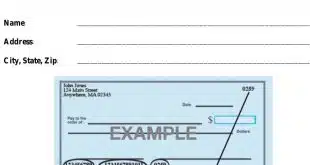Banking giant JP Morgan Chase & Co. has begun issuing EMV debit cards, with plans to convert its entire debit card portfolio of 34 million cards to chip by the end of 2016, Chase announced Tuesday.
Chase began testing chip-enabled debit card issuance in Arizona and Illinois two months ago, a Chase spokesman tells Digital Transactions News. Chase expects 70% of its debit cards to have chips by year’s end. The spokesman would not say how much the EMV debit conversion will cost Chase. One estimate is that a chip card may cost between $3 and $7 to issue. On the low end, the conversion thus might cost $102 million.
Chase debit card holders with lost, stolen, damaged, or expired cards will receive the chip versions first, as will consumers opening new accounts. “Our mass reissuance will occur in the next 12 months,” the spokesman says. The plans also call for converting Chase’s Liquid prepaid cards to chip.
EMV is meant to better secure point-of-sale transactions by migrating credit and debit cards from magnetic-stripe payments to chip ones. Issuers are expected to dramatically increase the number of chip-enabled credit and debit cards over the next several months in anticipation of the payment card networks’ Oct. 1 liability shifts that will place the onus for fraudulent transactions at the point of sale on the party, whether it’s the merchant or acquirer, least prepared for an EMV transaction.
One forecast predicts that issuers will have 800 million EMV chip cards in circulation by year’s end.
Chase began issuing chip-enabled credit cards in 2011, and says it now has more than 22 million such cards in circulation. EMV debit cards are taking a bit longer to issue because of the requirement in the Dodd-Frank Act’s Durbin Amendment that merchants have two unaffiliated routing options. The EMV standard, as implemented in the United States, had to be modified to accommodate this. In other markets, an EMV chip card operates on a single debit network.
“We’ve been seeing the issuing side of the equation continue to gain momentum as the year moves along,” Julie Conroy, research director at Boston-based Aite Group LLC, tells Digital Transactions News by email. “Debit is a bit more challenging due to the Durbin Amendment, so we’re seeing that move a bit more slowly than credit.”
Chase also is upgrading its 18,000-unit ATM fleet to accept chip cards, with plans to complete that process by year’s end. At Chase ATMs, consumers will insert their chip cards and wait for the machine to clamp down on the card. To ensure the card is not left behind, consumers will have to remove the card prior to receiving their cash.
Chase announced an education program designed to help acquaint consumers with how chip cards work. In a survey commissioned by Chase of more than 1,000 Americans, 80% said they were concerned about the security of credit and debit card transactions, yet 65% had not heard of chip technology.
“Consumer awareness is going to be an ongoing challenge with the U.S. migration,” Conroy says. “Unlike other countries, like the United Kingdom and Australia in which the government actively supported the education process, in the United States, there is no similar support.”
Issuers and the card brands must educate consumers and merchants, she says. “While we can expect to see various educational efforts ramp up as we get closer to October, we’re still going to see a lot of consumers and front-line staff confused about the new process.” For one thing, consumers will have to become accustomed to dipping the EMV chip card in a POS terminal and leaving it there until the transaction is complete.




